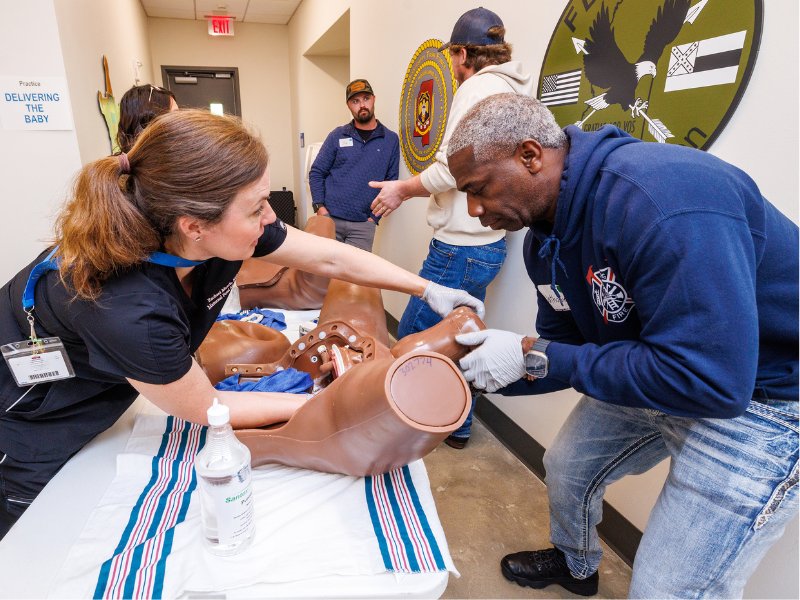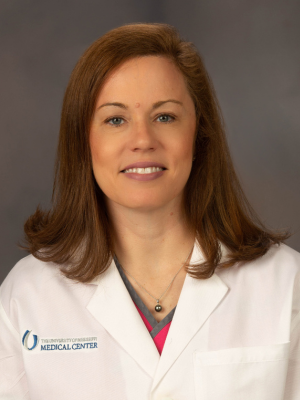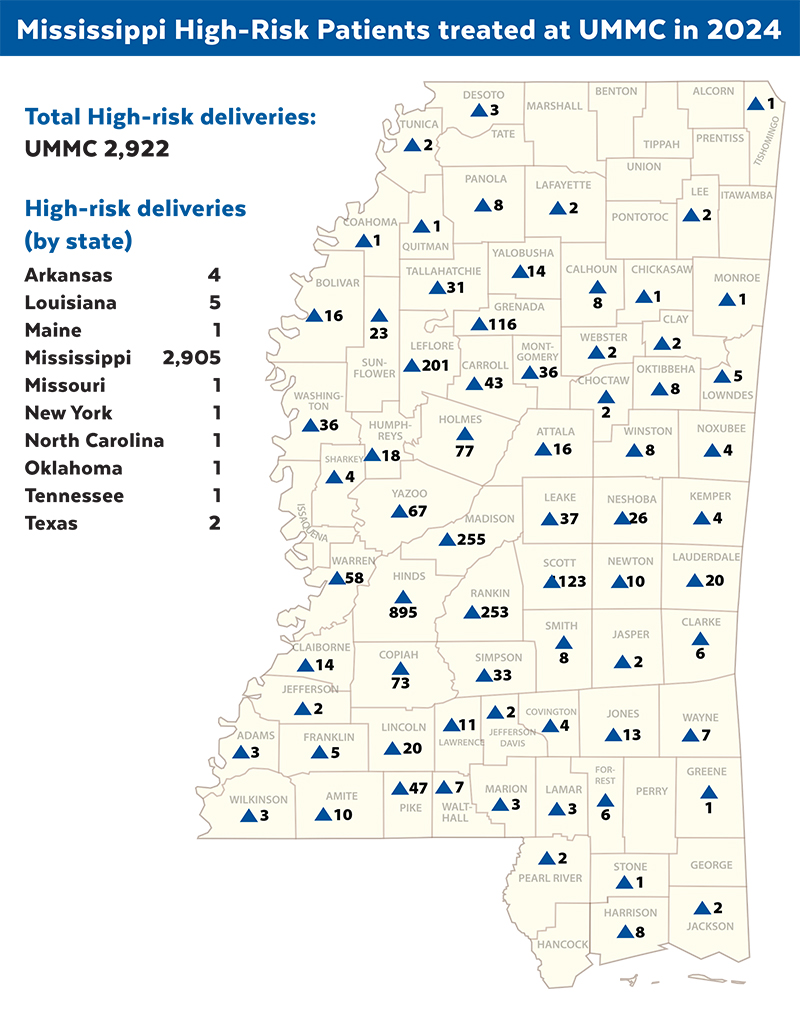UMMC’s STORK Program delivers lifesaving emergency obstetrics training

Editor’s Note: Throughout this series about maternal health, we will take a closer look at the University of Mississippi Medical Center’s work through its three-part mission of education, research and health care to address the state’s maternal health crisis. These stories, which will be part of an occasional series examining the state’s only academic medical center’s role in fighting some of the most pressing health issues, share the experiences of caregivers, researchers, patients and learners. We hear from those affected by maternal health challenges and from those who are fighting against them in the hospital room, lab and classroom.

Recognizing the signs of an emergency and taking immediate action can mean the difference between life and death for a mother or newborn.
In Mississippi, where more than two-thirds of rural hospitals lack labor and delivery services and maternal and infant mortality rates remain among the highest in the nation, a University of Mississippi Medical Center initiative is in its fifth year of helping close the gap in emergency care by bringing life-saving obstetric training to hundreds of medical providers across the state.
The program’s reach has expanded dramatically since its inception. Originally designed to train 100 participants across 10 sessions, STORK has now delivered more than 60 classes to nearly 1,000 health care professionals across the state—from flight nurses to paramedics to rural ER staff. Participants leave with not just new skills but also practical supplies including infant CPAP masks, warming mattresses and emergency delivery kits.

“Training is one thing,” said Dr. Rachael Morris, associate professor of obstetrics and gynecology and maternal-fetal specialist. “Providing the tools to act on that training is another. We do both.”
That kind of preparedness is already making a difference in real clinical settings.
When a patient in the Emergency Department at UMMC was suffering a postpartum hemorrhage, Dr. Rachel Jones, a resident physician, knew exactly what to do. Thanks to her recent training through the STORK program, she was able to stabilize the patient quickly while waiting for the obstetrics team to arrive.
“The training gives you a very clear-cut way to approach emergencies in obstetrics,” said Jones. “Having gone through the class, we were able to quickly go through the algorithm that STORK prescribes to a mother in that condition.”
The STORK program—short for Stabilizing OB and Neonatal Patients, Training for OB/Neonatal Emergencies, Outcome Improvements, Resource Sharing, and Kind Care for Vulnerable Families—was created by the UMMC Center for Emergency Services in 2020. With funding from the W.K. Kellogg Foundation, STORK trains frontline medical professionals, including those without specialized obstetrics backgrounds, to handle emergency deliveries and pregnancy complications like hypertension, hemorrhage and preterm labor.
“We live in a state that is long and skinny with over 50% of our counties being maternity care deserts,” Morris said. “That means patients in those areas may be hours from the nearest obstetric provider. STORK was created to bridge that gap—to empower emergency providers and medical teams in those rural areas to act fast when obstetric emergencies strike.
 In its latest report, the Mississippi Maternal Mortality Review Committee emphasized the need for broader provider education on hypertension, preeclampsia and maternal warning signs—especially in urgent care and emergency settings.
In its latest report, the Mississippi Maternal Mortality Review Committee emphasized the need for broader provider education on hypertension, preeclampsia and maternal warning signs—especially in urgent care and emergency settings.
STORK’s five-hour training sessions combine lecture-based instruction with high-fidelity simulations. Using lifelike maternal manikins (affectionately named Victoria and Rhonda), complete with infant simulators, participants encounter the chaos and urgency of real-world scenarios: a distressed mother in labor, a breech birth, a postpartum hemorrhage and an unresponsive newborn. The simulators blink, breathe, scream and display vital signs on monitors. The babies cry, move, turn blue and require swift decisions. CPAP or ventilator? Fluids or meds?
When it comes to medical education, Morris sees simulation as the way of the future. “Having the ability to work with a manikin that is nearly as lifelike as physically possible in an environment that mirrors the chaos that occurs in an obstetric emergency helps create muscle memory. So, when a real emergency occurs, you don’t panic. You act.
“Obstetric emergencies are rare—but when they happen, you don’t have time to wait for a specialist,” she said. “That’s why this readiness training matters so much. STORK is not the only solution, but it’s a powerful tool in our arsenal. You may not be an OB or a neonatologist, but with the right training, you can still save a life.”
With a third round of grant funding now underway, STORK is committed to continuing its mission to travel across Mississippi, building a network of preparedness for some of the most vulnerable mothers and babies in the state.
“Maybe it’s not your patient,” said Morris. “Maybe it’s your wife, your sister or your neighbor. That knowledge, what to do and when, can be the difference between life and death.”


